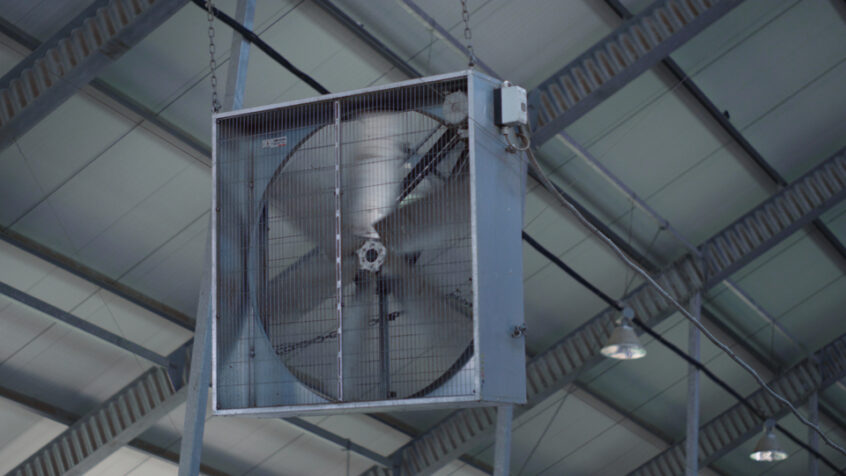Ceiling fans are probably a central part of your ventilation plans during the warmer months, but they also play an important role in barn ventilation in winter. Cold winter weather poses unique challenges to airflow for livestock. Address these issues by utilizing ceiling fans and turbines to keep your animals safe.
Improving Airflow for Livestock
Barn ventilation plays an important role in reducing moisture levels during winter months. Moisture and condensation can easily build up in an enclosed space, especially in locations where temperatures regularly rest below 35 degrees Fahrenheit. In livestock barns, high levels of humidity, poor airflow, and a lack of insulation in the barn can all contribute to damp air and condensation.
Proper barn ventilation can help remedy these issues and keep livestock safe. Ceiling fans and turbines promote optimal airflow for animals, circulating air and reducing humidity by taking out unnecessary moisture. Fans and turbines can also facilitate the exchange of old air for fresh air from outside. Additionally, barn ventilation helps filter out other potentially harmful substances in the air, like dust, gas produced from waste, and disease-causing particles.
Risks of Excess Moisture for Livestock
Improper barn ventilation in winter leads to moisture buildup, which poses a variety of health risks for your animals.
Low Air Quality
When moisture stays in the air and is not dealt with, it results in poor air quality. Once humidity levels get past 80%, air quality is low. In fact, at around 95% humidity, bacteria in the air have a lifespan of 18 months. That lifespan drops to 90 seconds when the humidity stays at a maximum of 80%.
Respiratory Illness
Given these statistics about bacteria and humidity, it’s no surprise that prolonged moisture and improper barn ventilation can cause respiratory illness in livestock. When there isn’t adequate airflow or ventilation, harmful substances end up suspended in the air, including dust, odors, mold, and pathogens. All of these particles can cause irritation in the respiratory tracts of livestock, which can lead to inflammation, infections, and respiratory illnesses.
Poor Performance
High levels of moisture in the air can actually impact the performance of your livestock too. As an example, dairy cows are able to reach their peak performance when their body temperature is around 101.5 to 102.5 degrees. When moisture levels and temperatures in the barn are not optimal, your livestock’s body temperature and performance will be negatively affected.
Building Impact
Moisture isn’t just an issue for the health of your livestock. It can also cause significant problems for the barn itself. Condensation can cause rust on metal surfaces in the barn, damage roofing and insulation, and promote rot. In extreme cases, collapses can occur, endangering your livestock inside.
Choose the Right Barn Ventilation Solutions
The best way to keep both your livestock and your barn safe during the winter months is to make sure you have proper barn ventilation. At Carlson Wholesale, we offer several options for industrial ceiling fans and turbines. Contact us today to find out which barn ventilation solution is right for you.
